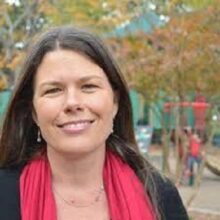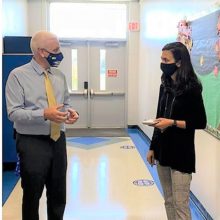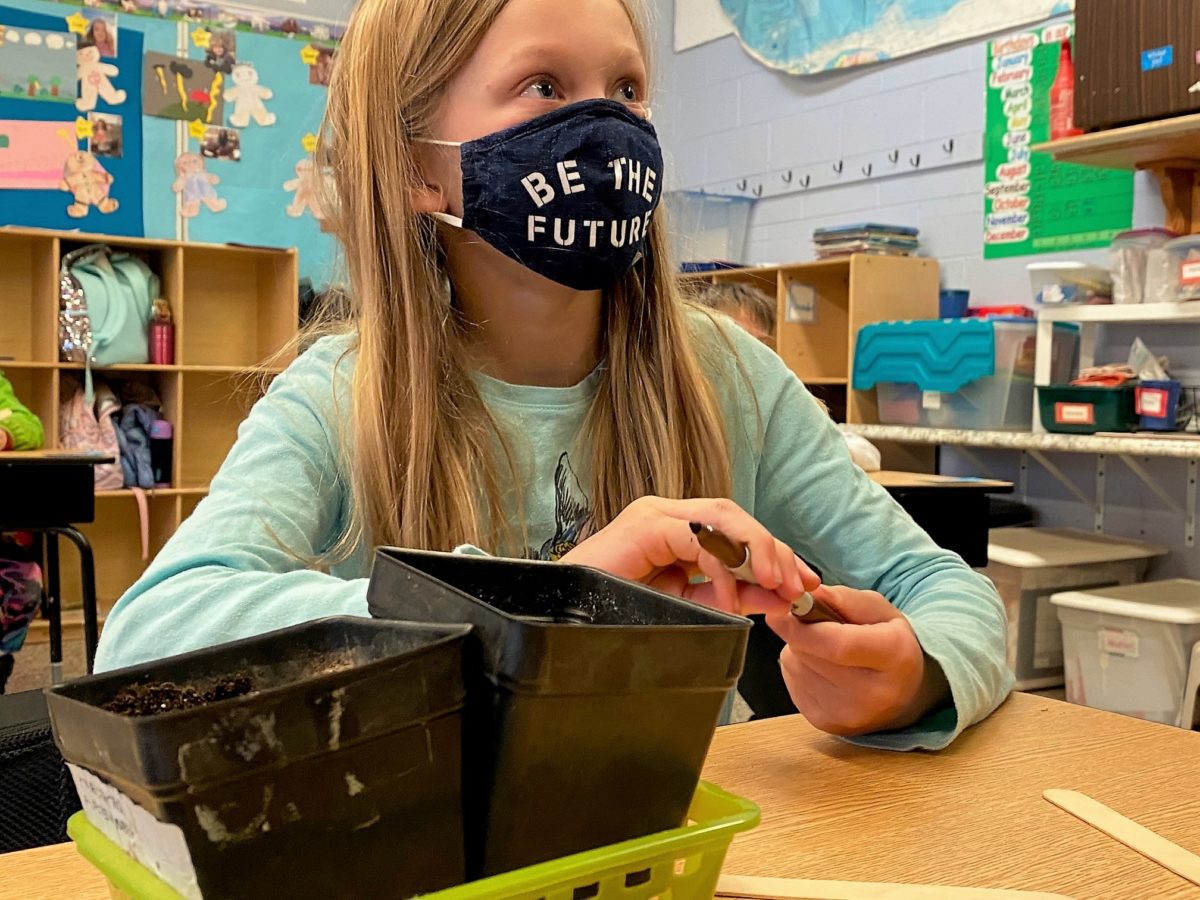
On public school choice, market share, the 25th anniversary of charter schools, and the most pressing issues in 2022
Dear everyone invested in our public schools from students to parents, from teachers to school board members, from business leaders to philanthropists to policymakers,
At the beginning of 2021, I set out across North Carolina to visit our most innovative public schools to learn from classroom and school leaders about the pandemic and how it was shaping their experience of school.
Then delta hit. From the start of school in the fall of 2021 until the holidays, I visited schools and districts in 19 counties. I’ve written this before, but it bears repeating.
Out of the blue, the ordinary-ish start of school we all had hoped for became anything but that.
Day in and day out, educators had to play multiple roles, from driving school buses to serving in the cafeteria, because of staff shortages. They faced a trifecta of fear – fear of the virus, fear of school violence, and fear of citizens who are compromising our constitutional right to free speech with violence threatened and real.
Their students came to class as the whole child they are with nutritional, health, mental health, and other needs that need tending to. Teaching required making up for the lost instructional time on top of providing personalized learning opportunities for the students in person and out on quarantine.
All that is on top of the pandemic wreaking havoc on the lives of our educators too.
Omicron welcomed us back from the holidays.
On this day — the first day of National School Choice Week — lifting up and thanking our public school educators seems inadequate but important.
National School Choice Week and our public schools
National School Choice Week is being observed January 23-29, 2022. It promotes “effective K-12 education options” and the focus is “equally on traditional public, charter, magnet, online, private, and home education options.” You can explore the events being held across North Carolina here.
Governor Roy Cooper proclaimed this North Carolina School Choice Week. As reported by the News & Observer, the proclamation was requested by the North Carolina Association for Public Charter Schools. Cooper voted for charter schools back in 1996 when they were first legislated in North Carolina.
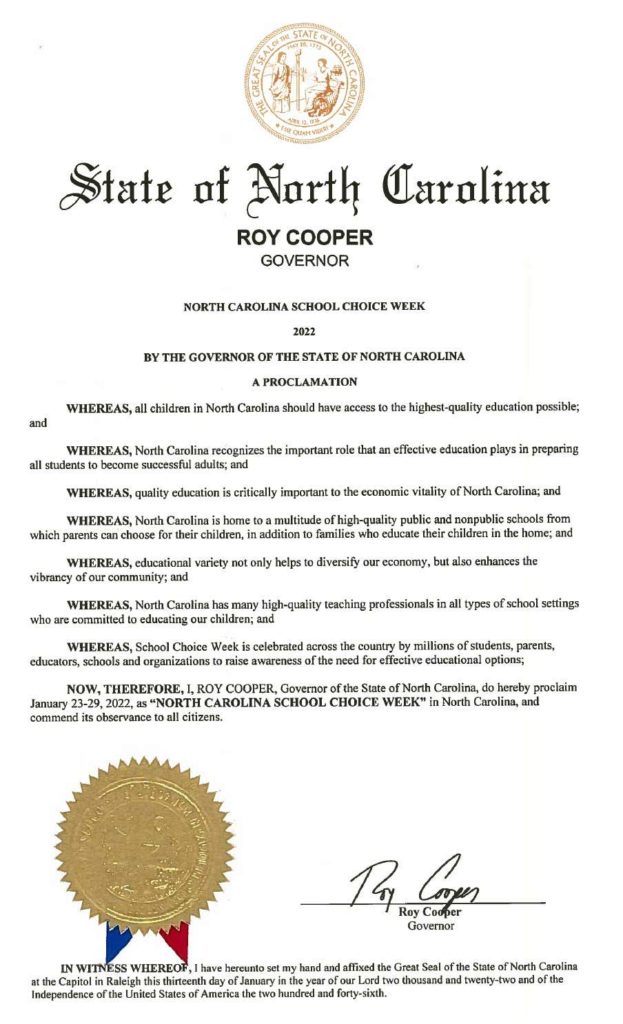
Statewide, according to the Office of State Budget and Management (OSBM), we have 1,853,425 children ages five to 18, and our state is entrusted to provide them with a sound, basic education as required by the N.C. Supreme Court’s interpretation of our state constitution in Leandro.
In North Carolina, 1,367,498 students are enrolled in traditional public schools, 125,877 are in charter schools, 107,341 are in private schools, and 125,877 are estimated to be in homeschools.
This article will look at public school choice, present market share data county by county, identify key issues to watch and weigh in on in 2022, and offer ways for you to support our public schools.
On public school choice and marketing our public schools
In North Carolina — and around our country and the world — parents want a good “fit” for their child when it comes to picking a school.
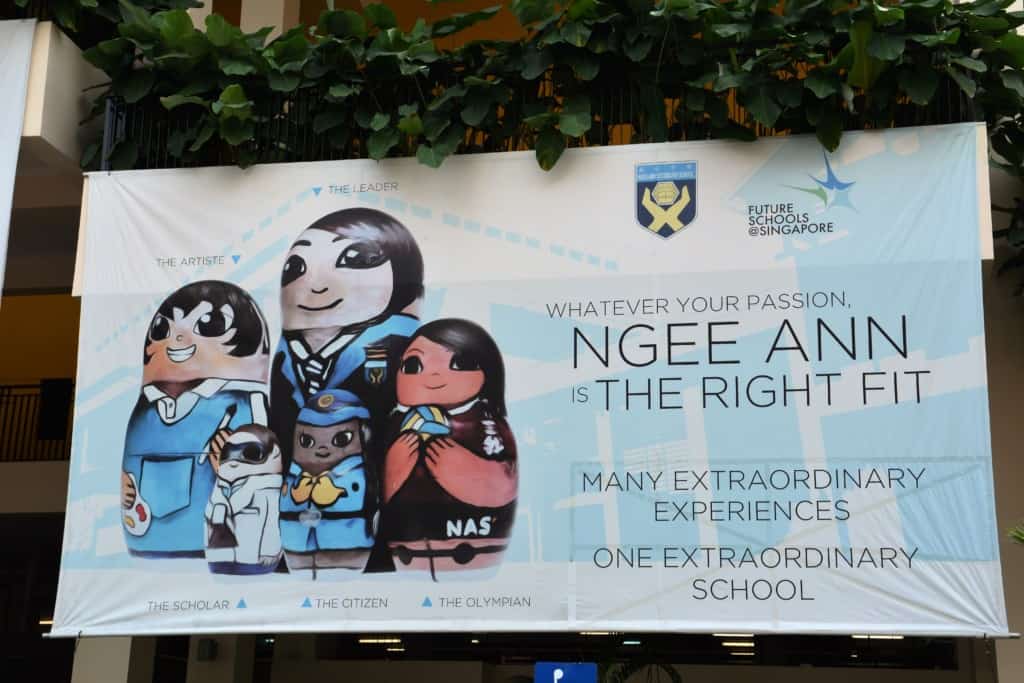
Public schools offer an abundance of fit and choice for students and parents: year round, charter, language immersion, single sex, early college, career academies, virtual academies, alternative schools, lab schools, many magnet options, and more.
Our public schools are among the most innovative.
Our public schools are finding rigorous ways to address equity.
Stay tuned for a love letter to all the schools I visited in 2021 so you can see all of this amazingness.
As we continue to watch enrollment, more and more schools and districts are marketing the choice and fit they offer to students and parents.
Katie Test Davis is the founder of Forthright Advising. She started out working with public information officers and now finds herself among the Forbes Next 1000. Forthright Advising works with public school districts to get “one step ahead” of enrollment trends.
From researching local audiences of parents making the school choice decision, to thinking about how values help parents overcome pain points, to making sure parents are getting information about public school choice where they find information online, it’s an offensive strategy worth considering.
Here you can get their free guide to boosting public school enrollment.
In November 2021, Politico reported, “The race is on for control of the nation’s schools.”
We will help. EdNC is iterating our strategy to tell more and more of your stories, cover local elections, and assess the impact of market share on public schools county by county.
The pressure on public schools created by market share
As Forthright Advising notes, the pressure on traditional public school enrollment is coming from enrollment declines linked to the pandemic, our youngest learners delaying the start of schooling, and the collective pressure from charter schools, private schools, and homeschools.
This data and analysis of market share by school type is intended to invite a more nuanced discussion of market share county by county. The data is not perfect, and in part, that is what makes it interesting.
Here is our data in a spreadsheet. Here is our methodology.
Before we talk about what we see in the data and the questions it raises, let’s talk about our methodology.
We use data from OSBM to look at projections of overall population of children county by county and think about how many zero to four-year-olds will need educational services in the coming years.
From the number of five to 18-year-olds in each county, we subtract the number of students in that county that attend traditional public schools, charter schools, private schools, and estimated in homeschools.
In counties where there is a remainder, a category called “other” in our analysis, it may help us begin to assess how many students county by county are missing. We wonder if a historical analysis prior to COVID-19 would be instructive.
In counties where the remainder is negative, one possibility is educational options there are attracting students from neighboring counties. What other explanations come to mind?
The data lead us to wonder about traditional public school districts that appear to be serving more than 90% of the students in counties like Currituck, Cabarrus, and Pender. In 93 of 100 counties, 60% or more of students are served by traditional public schools. The median is 75%.
Further inquiry is warranted where the charter school market share appears to exceed 25% in counties like Northampton, Pamlico, and Vance. We allocated enrollment to the county where the charter school is located, but we’d like to know charter school enrollment by county for the most recent ADM data.
In three counties — Bertie, Hertford, and Lenoir — market share of private schools appears to exceed 10%.
We are curious about the number of students being educated in homeschools in Ashe, Graham, Madison, and Yancey counties where the market share is at or above 20%.
This analysis allows us to begin a conversation county by county about the collective impact of market share on traditional public schools.
We wonder how these trends are changing over time and plan to do more research.
Note that you can see what may be errors in the data. Most noticeably in Camden County, there appear to be more students enrolled in public schools than we would expect given the 5-18 population estimates. We will be following up to learn more.
Please let us know what trends you see in the data and the impact of market share pressure on your traditional public schools.
Charter schools in North Carolina celebrate 25th anniversary in 2022
After House Bill 955 passed in 1996, 34 charter schools opened in North Carolina for the 1997-98 school year. A cap of 100 charter schools remained in place until legislation was passed in 2011.
Currently, there are 204 charter schools operating across the state.
Nine charter schools are scheduled to open in the fall of the 2022-23 school year, when charter schools will celebrate their 25th anniversary in North Carolina. EdNC has asked and will continue to ask:
- What are best practices from charters over the past 25 years, and how do we scale them?
- What innovations in practice and management are needed and how do we incentivize them?
- Who is responsible for sharing information about best practices with public school administrators and educators, parents, and policymakers? If charter principals were expected to serve that function, they have a school to run. If not them, then who? DPI and myFutureNC are both working on building dashboards to share promising practices.
- Have we done a good job of enabling charters and districts to work together? Has that been done elsewhere? If so, how do we replicate that across the state?
- How prepared are we as a state for the continued rise in percentages of rural students attending charters?
- As the number of charters continue to grow as a percentage of market share, what changes on the horizon might we be able to plan for and anticipate using the examples of places like Philadelphia, Milwaukee, and New Orleans as guides?
- Our state has never clearly identified our expectations for charter school performance. How good is good enough?
- What questions do you think we should be asking about North Carolina’s charter school experience? Who has a story to tell that has not been told?
The five states with the highest percent of students enrolled in charter schools among all public school students include Arizona, Colorado, Louisiana, Florida, and Delaware.
The Charter Schools Advisory Board monitors the growth and oversight of charter schools across North Carolina.
The most important issues facing public schools in 2022
In addition to enrollment, here are the public school issues I am watching and worrying about in 2022, especially relative to whether our educators have the bandwidth in the middle of a pandemic to advocate for themselves and the profession.
A new licensure plan that would change how teachers are compensated
This new licensure plan is likely to be introduced in the long session of the legislature beginning in 2023 which gives educator this year to weigh in. The Professional Educator Preparation and Standards Commission (PEPSC) and then the N.C. State Board of Education will take the plan up next. Superintendent of Greene County Patrick Miller currently chairs PEPSC, and who leads that commission will continue to be worth watching.
How our public schools are funded
In the budget passed by the legislature, there is a provision — section 7.17(a) of Senate Bill 105 titled “full-time equivalency of public school students — directing the N.C. State Board of Education to figure out a formula for using full-time equivalency as a measure for per-pupil funding rather than ADM. Full-time equivalency, also known as FTE, is a way to measure the amount of course hours taken by students to fund, typically, institutes of higher learning, such as universities and community colleges.
The provision directs the State Board to report to lawmakers by April 15, 2022 on an FTE formula.
A move to funding based on FTE rather than ADM would be a departure from the way education has traditionally been funded in North Carolina. We are watching for the overall impact on public school funding as well as the impact on public schools providing services to homeschool students and for community colleges serving public school students.
How did we get here?
Back in 2009, the legislature commissioned an evaluation of North Carolina’s school finance system by Denver-based consulting firm Augenblick, Palaich and Associates (APA). A final report was submitted to lawmakers in September 2010, entitled “Recommendations to strengthen North Carolina’s school funding system,” and while there was bipartisan support for pursuing school finance reform, it was put on hold because of the Great Recession.
Five years later, after the recession abated, the legislature asked the now defunct Program Evaluation Division to prepare this report. Hold on for the name of the report: “Allotment-specific and system-level issues adversely affect North Carolina’s distribution of K-12 resources.”
A legislative commission was convened in 2017 to take up the recommendations and the reports. It seemed like legislation might be taken up and then COVID happened.
The special provision in the budget could lead to significant changes in the appropriations for public schools. Please stay tuned and prepare to weigh in.
On Leandro and providing a sound, basic education to our students
The Leandro case continues to unfold, and now it is before the N.C. Supreme Court again.
From who is a party to the merits of the case, it now also raises broader questions, including separation of powers of the executive, legislative, and judicial branches of government. Here is information on how to follow the case.
In a sobering moment for me this year, an educator now philanthropist wondered when and if the case would lead to dollars for a classroom, school, or district.
In addition to the court case, here are some things to watch this year:
A federal constitutional right?
In my travels, most people don’t realize there isn’t a right to education afforded by the U.S. Constitution. But now there is the beginning of a movement to create a federal constitutional right to a quality education. You can watch a conversation about the potential impact this could have on closing racial and economic achievement gaps in America here.
Inputs versus outcomes
In light of the Republican wins in the legislature in 2020, considering Leandro through a conservative lens could help find common ground.
First question. Is public education an appropriate role of government? Consider the percentage of students educated in public schools.
Second question. What percent of students are not getting a sound, basic education, and are there district by district differences?
While the court, the WestEd report, and the comprehensive remedial plan have considered outcomes, increasingly the case has become about inputs.
Recently, I asked two principals how many of the kids in their schools were not receiving a sound, basic education. Silence first. Then they both shook their heads. If it were up to you, I asked, how would you assess whether a sound, basic education is being provided? We need a way for teachers, principals, and superintendents to think about whether they are providing their students a sound, basic education.
Chief Justice Burley Mitchell said the opinion of the court in 1997, “An education that does not serve the purpose of preparing students to participate and compete in the society in which they live and work is devoid of substance and constitutionally inadequate.”
What outcomes matter? Kindergarten readiness? Literacy? Financial literacy? School attendance? A transition plan for dropouts? ACT? FAFSA? High school graduation? A transition plan to career or college? Earning a family-sustaining living wage?
How do we measure those outcomes and what are the benchmarks? One possibility is to align outcomes with the myFutureNC performance indicators.
Third question. Is there a fiscally-responsible approach to additional investments towards those outcomes district by district with evaluation?
Fourth question. Could innovation play a role in moving us more quickly towards those outcomes?
In addition to the court case, we are watching what’s happening with the Hunt-Lee Commission, which will report its recommendations in April, and the N.C. House Select Committee on an Education System for North Carolina’s Future, which begins its deliberations today.
Care about our public schools and want to make a difference?
Vote. Encourage others to vote. Work in precincts and support the democratic process.
Run for office. When educators run for office, they keep public school issues at the forefront.
Talk to your legislators. Sen. Bob Steinburg, R-Chowan, said at a recent convening, “Advocacy is job #1. Having relationships is paramount.” Rep. Zack Hawkins, D-Durham, followed up and said when it comes to advocacy, you have to invite your legislators to visit you.
Learn more about education policy. We recommend the Public School Forum of NC’s Education Policy Fellowship Program.
In states where “leaps and bounds” are being made, leaders have found ways to work across difference. Build relationships locally and statewide. As the midterms approach and these issues become more polarized, more politicized, and more divisive, it means we need to be talking more not less.
Volunteer in our schools so you can share stories about our students and our educators, our classrooms and our schools.
The Governor in Idaho, Brad Little, a Republican, said earlier this month, “If you’re running a business, you know you can only attract and retain dedicated, quality workers by paying them competitively, offering good benefits, and making them feel valued. Our educator workforce is no different.” Thank our teachers in all the ways.
Editor’s Note: Patrick Miller serves on the board of EducationNC.
Behind the Story
Analisa Sorrells compiled and analyzed the data on market share for this article.

